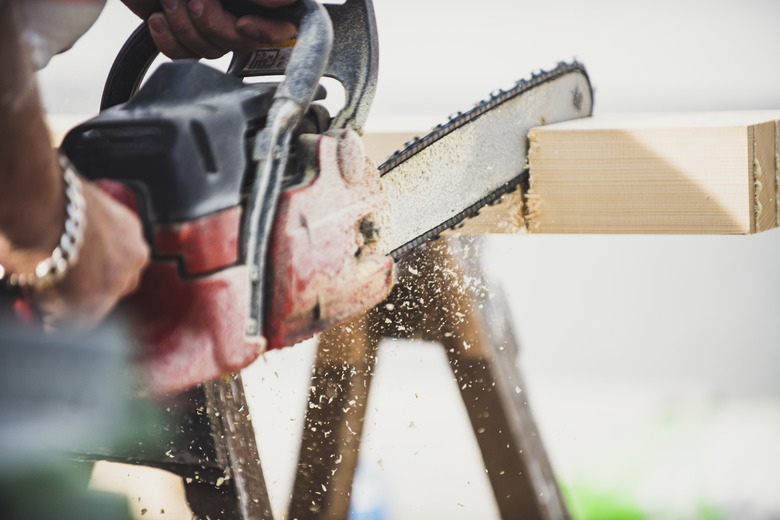How To Repair The Fuel Line On A McCulloch Chain Saw
Weekend lumberjacks depend on the durable and consistent gas McCulloch chain saw to handle big and little jobs. If the tool isn't roaring to life or is sputtering out or stalling, it could be the fuel lines that are causing the saw to pause. There are a few ways to test for funky fuel lines and repair them to bring the brattle back to the gas McCulloch chain saw.
Why Fuel Lines Break
Why Fuel Lines Break
The flexible fuel lines can break in half or simply crack after heavy use. If the chain saw is not properly put away and oiled on a regular basis, the fuel lines can become brittle. If left exposed to the elements in any season, hot or cold, the ropes of fuel lines can be compromised. A heavy odor of gas in the air when the chain saw is first revved up will alert you to a clogged or broken fuel line.
Safety Tips for Broken Fuel Lines
Safety Tips for Broken Fuel Lines
Anytime that the smell of gas is overwhelming when operating the gas McCulloch chain saw, immediately turn off the machine and inspect it for broken or cracked fuel lines. If gas seeps from the tank or beads up on the outside of the machine, shut down the chain saw and walk away until it is cool. When gas is free from its tank or lines, it creates a flammable situation, and fire isn't far behind if the machine is left running.
How to Check a Fuel Line for Faults
How to Check a Fuel Line for Faults
Remove the McCulloch chain saw fuel line from the machine and soak each one independently in a bucket full of water. Bubbles that form on the outside of the tube and float to the surface in one area will let you know where a crack, pinhole or other fault in the line has formed. Another way to check the fuel lines is to block off one end of the hose and place a pressure gauge on the other end. Fill the tube with air and spray a mixture of soap and water onto the hose. The escaping air will form bubbles on the surface of the hose where the hose is compromised.
McCulloch Chain Saw Fuel Line
McCulloch Chain Saw Fuel Line
To replace or repair a chain saw fuel hose, gather a few tools, including a socket driver, needle-nose pliers, Allen wrench, empty bucket or fuel container that can handle gas, and scissors. For precautions, have protective gloves, eyewear and a good amount of shop rags to mop up any gas spills. Used gas and oil from a chain saw can be hard on the hands and cause problems with any minor cuts and scrapes you may have.
Remove the cylinder shield that protects the body of the McCulloch motor to get to the spark plug. Disconnect the wire from the spark plug and remove the cover from the air filter housing. Check the filter for clogs. If the filter is fine, be careful to set it aside where it won't get damaged. It can be used again. Use a socket wrench to unscrew the mounting nuts to the carburetor. This should expose the fuel lines. Be careful around the sensitive throttle and other areas of the exposed engine. Remove the lines with the needle-nose pliers.
To install new lines, cut the hose at an angle with scissors. This will help them to thread onto the fuel tank. If the lines are stubborn, place a drop of oil around the edges to secure them to the gas tank. Gently return all of the parts to the engine to reassemble the chain saw. Tighten each nut and bolt as you go to ensure the machine works well once the fuel line replacement is finished.
